I am trying to plot two histograms from two different datasets and each one has a different weight variable and dimension. I do not know how to do it, given that for example in the ggplot2 options, you have to rbind the datasets first and then create the histograms as grouped variables. Also, I tried with the usual hist command but it does not have the weight option. I was trying to use the library weights but I don´t know how to plot them in the same. This is a way of my actual code with simulate it data:
install.packages("weights")
library(weights)
w1 <- seq(1,500)
v1 <- sort(runif(500))
w2 <- seq(1,1000)
v2 <- sort(runif(1000))
p1<-wtd.hist(w1+1, weight=v1, density = 30, breaks= 1000, xlim=c(0, 100), col = "red")
p2<-wtd.hist(w2, weight=v2, density = 30, breaks= 1000, xlim=c(0, 100), col = "blue")
I am trying to get something like this:


